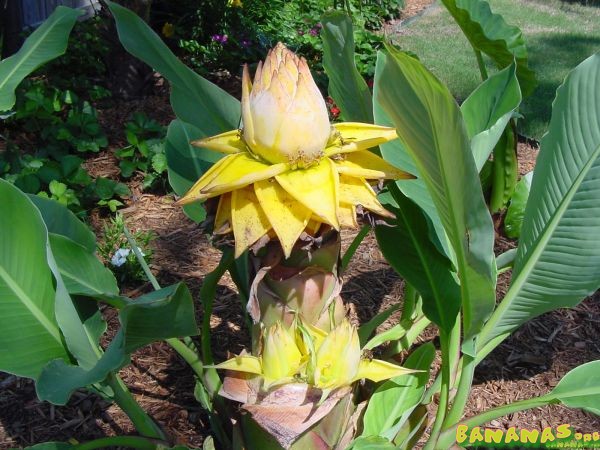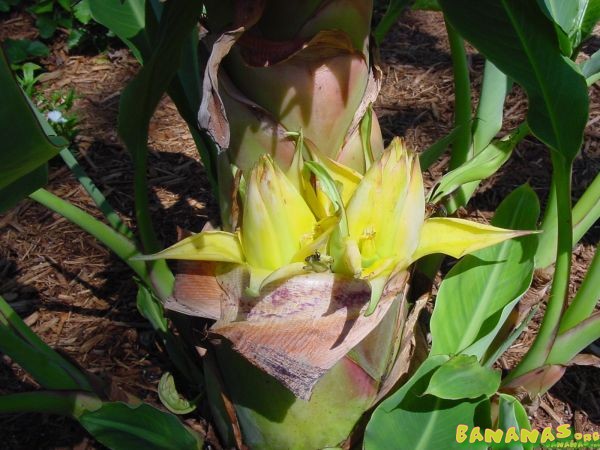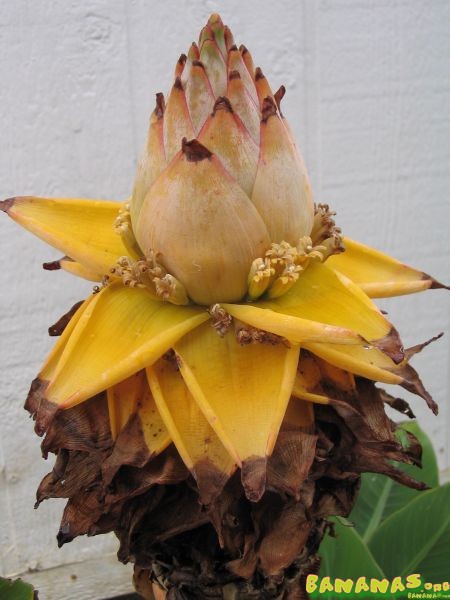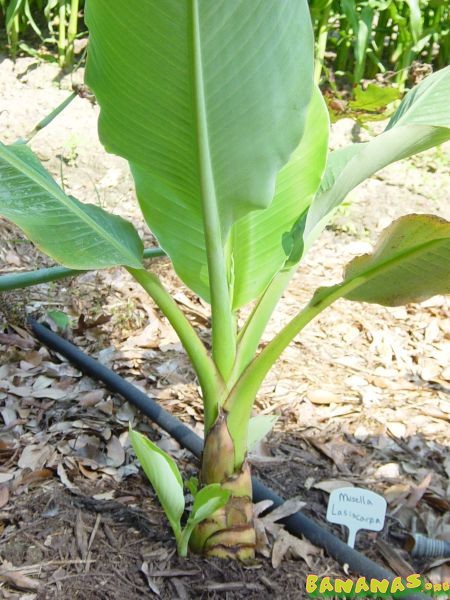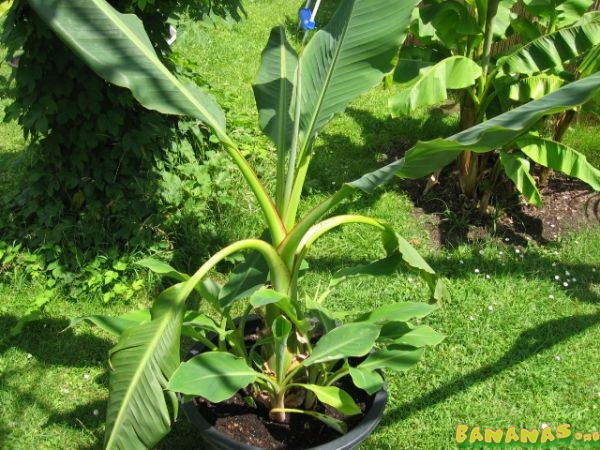Musella Lasiocarpa
From Bananas Wiki
| Revision as of 00:34, 16 October 2007 (edit) Microfarmer (Talk | contribs) (→Members Growing This Banana) ← Previous diff |
Revision as of 18:49, 4 April 2008 (edit) Austinl01 (Talk | contribs) (→Cultivation) Next diff → |
||
| Line 106: | Line 106: | ||
| *Mature Height - 4 to 6 feet | *Mature Height - 4 to 6 feet | ||
| - | *Survival Zone - 7 to 10 | + | *Survival Zone - 6b to 10 |
| - | *Fruiting Zone - 7b to 10 | + | *Fruiting Zone - 7 to 10 |
| - | *Cold Hardiness - 10°F with winter mulch and protection; can stand light frost without leaf damage | + | *Cold Hardiness - at least 10°F with winter mulch and protection; can stand light frost without leaf damage |
| *Wind - Very wind tolerant unlike most bananas; leaves will not tear under normal windy conditions | *Wind - Very wind tolerant unlike most bananas; leaves will not tear under normal windy conditions | ||
| Line 118: | Line 118: | ||
| *Taste Description - Fruit is not edible | *Taste Description - Fruit is not edible | ||
| - | *Propagation - Difficult to separate pups; divide larger pups in late spring or summer; it is necessary to dig very close to the parent plant in order to get some roots for the pup | + | *Propagation - Difficult to separate pups; divide larger pups in late spring or summer; it is necessary to dig very close to the parent plant in order to get some roots for the pup; usually easier to dig up the entire clump to separate the pups |
| *Personal Notes - Like all bananas, the yellow banana is a heavy feeder. Apply steady applications of fertilizer (such as organic products like cow manure or fish emulsion or synthetic products such as a balanced fertilizer) throughout the growing season; apply a good layer of mulch around the base of the banana to conserve soil moisture | *Personal Notes - Like all bananas, the yellow banana is a heavy feeder. Apply steady applications of fertilizer (such as organic products like cow manure or fish emulsion or synthetic products such as a balanced fertilizer) throughout the growing season; apply a good layer of mulch around the base of the banana to conserve soil moisture | ||
| - | *Growing Tips - Grow in well draining, amended soil; protect from winter cold in zones 7 and 8; consider digging the banana up and storing in a crawl space or unheated garage for the winter; plant outside again the following spring; separate pups very carefully as they have small corms close to the parent plant | + | *Growing Tips - Grow in well draining, amended soil; protect from winter cold in zones 6 and 7; consider digging the banana up, storing in a crawl space or unheated garage for the winter in colder areas, and then plant outside again the following spring; separate pups very carefully as they have small corms close to the parent plant |
| ===Known Afflictions=== | ===Known Afflictions=== | ||
| - | *Pests - No known pests | + | *Pests - No pests are common with this banana |
| *Susceptible Diseases - No known diseases | *Susceptible Diseases - No known diseases | ||
Revision as of 18:49, 4 April 2008
Contents |
Species Name
Musella lasiocarpa
Synonyms
Chinese Yellow Banana
Golden Lotus Banana
Pictures
(credit austinl01)
(credit austinl01)
(credit bigdog)
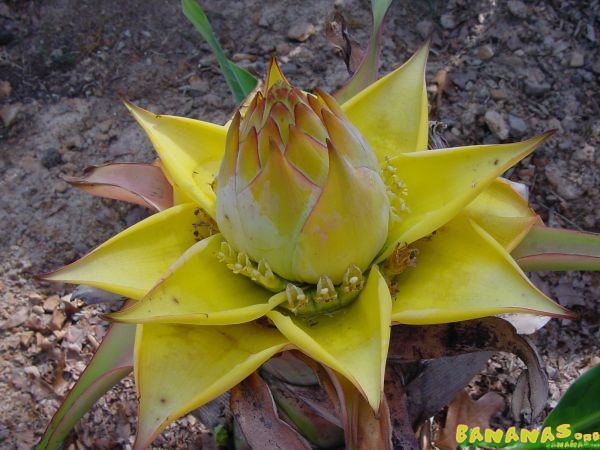
(credit austinl01)
(credit taylor_loves_bananas)

(credit austinl01)

(credit austinl01)
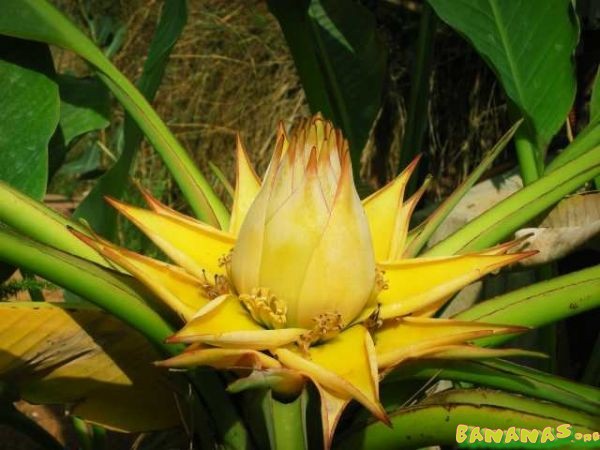
(credit barna)
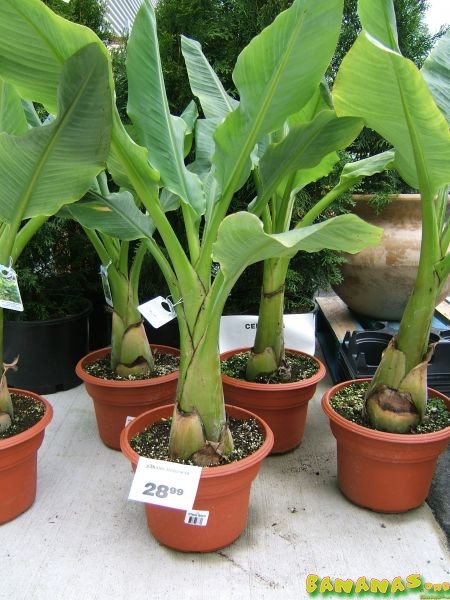
(credit Inoneear)

(credit Gabe15)
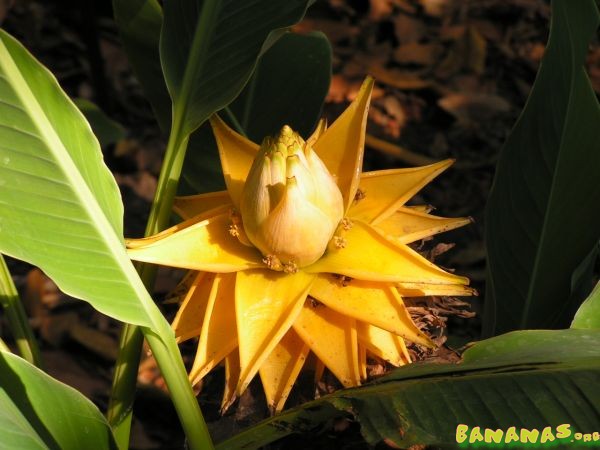
(credit Gabe15)
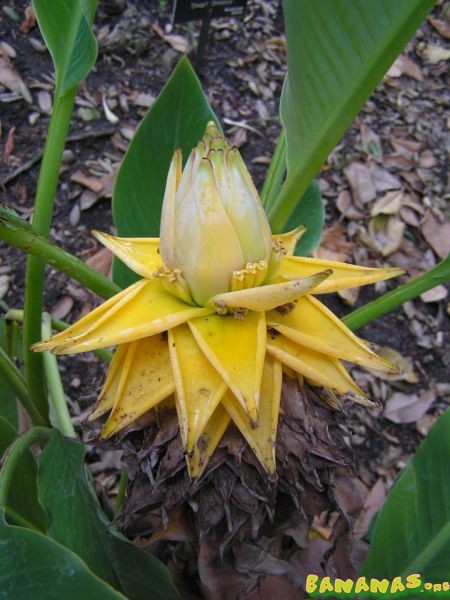
(credit Gabe15)
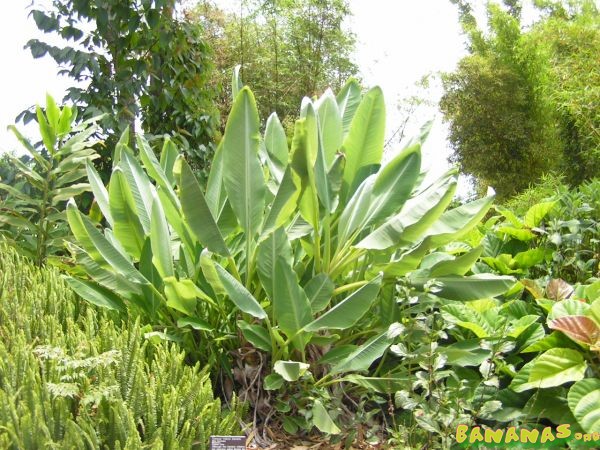
(credit Gabe15)
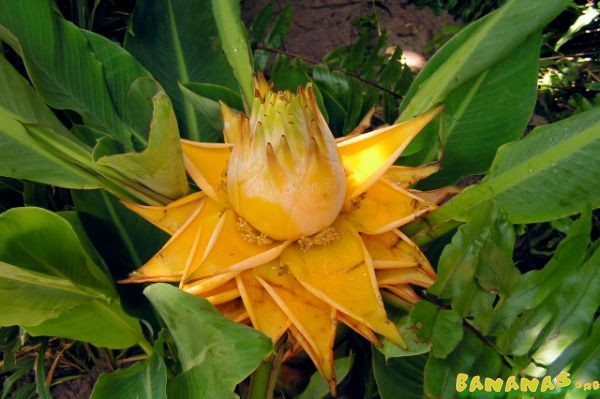
(credit Gabe15)
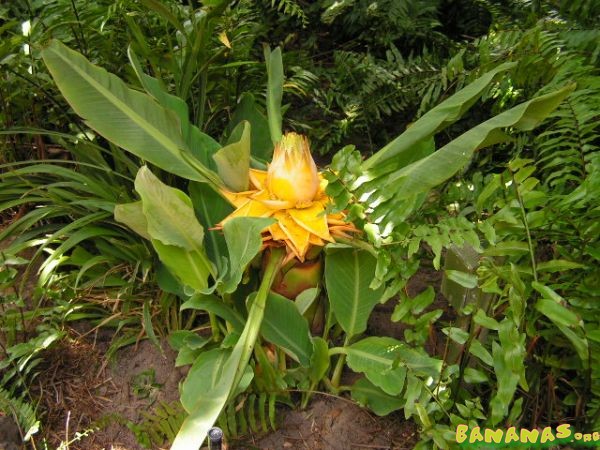
(credit Gabe15)
(credit Dombo)
Description
The Chinese Yellow Banana is a rare variety of banana from Yunnan, China. In its native land, the banana grows in high mountain regions with an elevation of 8,000 feet! Musella lasiocarpa has gray-green foliage, but it's grown for its large yellow flower which last up to 8 months! After flowering, tiny fruits may appear with dark, black seeds. This banana multiplies quickly producing many pups throughout the year. The Yellow Banana is a very unique and unusual banana for any garden and is very easy to grow.
Origin
China (extinct in wild)
- Date realized in trade - 1998?
Becoming more popular
Usage
Ornamental
Grown for its flower
Flowering
- Large, yellow flower; Occasionally a single plant can produce several flowers that emerge from the pseudostem
- Time To Bloom - 2 to 3 years
- Flower lasts up to 8 months and can withstand frost
- Flowers attract wasps and bees
Cultivation
- Mature Height - 4 to 6 feet
- Survival Zone - 6b to 10
- Fruiting Zone - 7 to 10
- Cold Hardiness - at least 10°F with winter mulch and protection; can stand light frost without leaf damage
- Wind - Very wind tolerant unlike most bananas; leaves will not tear under normal windy conditions
- Sun - Full sun
- Taste Description - Fruit is not edible
- Propagation - Difficult to separate pups; divide larger pups in late spring or summer; it is necessary to dig very close to the parent plant in order to get some roots for the pup; usually easier to dig up the entire clump to separate the pups
- Personal Notes - Like all bananas, the yellow banana is a heavy feeder. Apply steady applications of fertilizer (such as organic products like cow manure or fish emulsion or synthetic products such as a balanced fertilizer) throughout the growing season; apply a good layer of mulch around the base of the banana to conserve soil moisture
- Growing Tips - Grow in well draining, amended soil; protect from winter cold in zones 6 and 7; consider digging the banana up, storing in a crawl space or unheated garage for the winter in colder areas, and then plant outside again the following spring; separate pups very carefully as they have small corms close to the parent plant
Known Afflictions
- Pests - No pests are common with this banana
- Susceptible Diseases - No known diseases
Research Notes
- Links to useful discussion threads in the forum:
Musella lasiocarpa in a market
- Typical Price Range - $25 to $50
- $28.99 in Inoneear's photo taken at a marketplace.
Members Growing This Banana
External
- Links
Fairfield Botanical Garden Views
Musella Flower Progression Pictures
- Sources
